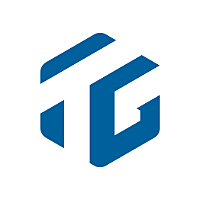There are two ways for risk to enter your facility and your product: you bring it in from the outside or you introduce it yourself on the inside. That’s the whole reason we have GMPs, HACCP, TACCP, VACCP, FSMA/FSVP, and a multitude of other acronyms that we ultimately bundle and mandate as “best practices.” But best practices don’t just require implementation, they also necessitate the ability to prove that they have been followed. That’s where data collection comes in.
We won’t argue that spreadsheets and clipboards can’t aid in the necessary data collection to bring products to market safely—they have for decades. And PDFs sent by suppliers are great for satisfying regulatory data retention requirements. After all, you can always cram another completed quality management program sheet into a filing cabinet, and cloud storage for PDFs is cheap and abundant.
But we will argue that these tools hamper timely analysis, human collaboration, and audit readiness, and ultimately slow down new product development. It’s time to rethink.
From Documents to Data
Digitization is not new. Vendors create “document packages,” typically a collection of PDFs, that they bundle up in emails to industry partners to assist everyone in staying compliant with regulations and standards. If it can be emailed, it’s digital. Even faxes are digital if you received them on your computer. But because of lack of structure, the data in these documents cannot be accessed for automated analysis or real-time compliance with business requirements, nor can they be mined for continuous product improvement or new product development. They certainly won’t trigger alerts or update vendor scorecards when there are nonconformances.
A great example of moving from documents to data is the Australian Product Information Form (PIF) now in its sixth revision. The PIF is used to collect and communicate specification, allergen, nutrition and other product data. The first PIF was created by the members of the Australian Food and Grocery Council (AFGC), similar to the US Consumer Brands Association (CBA, formerly Grocery Manufacturers Association [GMA]). AFGC members collaborated to create the first PIF as a word processing document, and later “upgraded” it to a spreadsheet, giving the format more structure which prepared it for integration into other data systems. However, sharing was still mostly accomplished via email. Since then the PIF has moved fully online as a hosted portal that can be accessed from anywhere and is offered by various cooperating vendors, but still maintained as a standard by the AFGC. The same PIF system is part of the AFGC Authorised Food Data System and is used cross-border, both in Australia and New Zealand.
Digitalization
Digitalization isn’t just about having easy online access to PDFs (that’s digitization). It’s about working collaboratively, everyone having access to the same data (not just hosted documents), minimizing data reentry, and making smart decisions about product risk and product development. And digitalization isn’t just about internal efficiencies; much more can be gained across companies when they collaborate on shared data. Neither spreadsheets nor clipboards are up to the task.
Imagine being able to work with a vendor digitally and collaboratively on a new or revised ingredient specification, with a full audit trail and signoff capabilities. Or to…
- Receive COAs that are automatically analyzed for nonconformances and compliance with other business requirements.
- Easily perform a desk audit on a new prospective vendor without having to request myriad documents.
- Create experimental formulations with ingredients that you’ve never sourced before to see if they meet your desired nutrition, allergen, or sustainability profiles.
- Check if you can sell the same formulation in multiple geographies and maintain your claims.
- Be automatically alerted to supply chain disruptions for the exact products you are sourcing (not just the category or geography), then be able source alternatives based on your unique requirements.
There are many other use cases. The point is that with industry-driven data standardization a lot more is possible than people had previously envisioned. With good search capabilities, digitization puts documents at your fingertips and makes data actionable by extending supply chain visibility to your suppliers’ shipping docks and beyond for proactive risk management and mitigation. And with PIF-like ingredient data, digitalization helps bring new products to market faster by being able to experiment and iterate more rapidly.
Digitalization brings together food safety, quality, regulatory, R&D, procurement, manufacturing operations, and business partners across internal silos, borders, and time zones to jointly meet new challenges.
About TraceGains: TraceGains provides collaborative supplier management and product development solutions to companies involved in food, beverage, and dietary supplements manufacturing. TraceGains’ supplier network consists of 18,000 vendors across 45,000 global locations. TraceGains connects safety, quality, R&D, regulatory, and procurement departments across the enterprise, and value chains across the globe.


